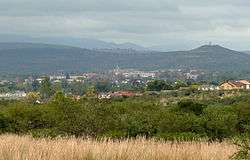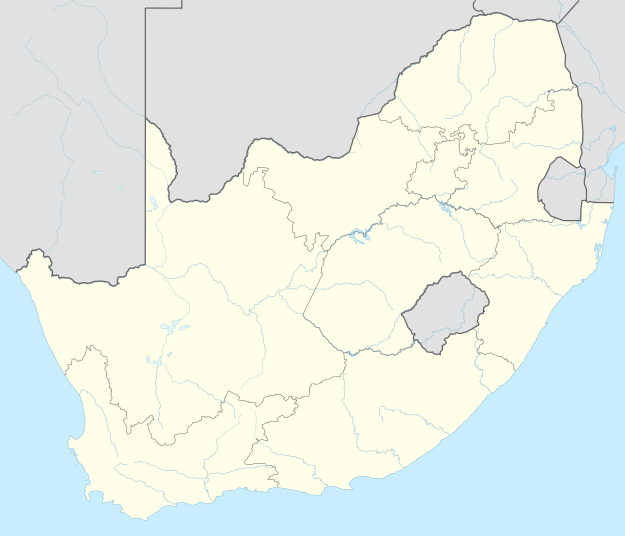Alice, Eastern Cape
Alice is a small town in South Africa that is named after The Princess Alice, daughter of the British Queen Victoria. Settled in 1824 by British colonists adjacent to the Tyhume River.
Alice | |
|---|---|
 Buildings of the University of Fort Hare in Alice | |
 Alice  Alice | |
| Coordinates: 32°47′21″S 26°50′06″E | |
| Country | South Africa |
| Province | Eastern Cape |
| District | Amathole |
| Municipality | Raymond Mhlaba |
| Area | |
| • Total | 9.85 km2 (3.80 sq mi) |
| Population (2011)[1] | |
| • Total | 15,143 |
| • Density | 1,500/km2 (4,000/sq mi) |
| Racial makeup (2011) | |
| • Black African | 93.0% |
| • Coloured | 5.6% |
| • Indian/Asian | 0.3% |
| • White | 0.6% |
| • Other | 0.5% |
| First languages (2011) | |
| • Xhosa | 84.0% |
| • Afrikaans | 7.3% |
| • English | 3.5% |
| • Other | 5.2% |
| Time zone | UTC+2 (SAST) |
| Area code | 040 |
Fort Hare University
Began early in 1847 as a fort built to house British troops. The same fort was converted in 1916 into a black university institution. Many of the current political leaders in South Africa were educated at the University of Fort Hare, also the alma mater of former President Nelson Mandela. The university is also the repository of the archives of the African National Congress documents and houses one of the most significant collections of African art.
Victoria Hospital
One of the oldest sites in Alice, it still graces the town with its old charm of yesterday. Victoria Hospital is a large district hospital on the outskirts of Alice, recently (2006–2011) fully reconstructed and upgraded by the Eastern Cape Provincial Government.[2]
History
_ex_CGR_731.jpg)
The location was named Lovedale by European missionaries who settled there in 1824. It was named after Dr. John Love of the Glasgow Missionary Society. During the Frontier War it was abandoned and the mission resettled on the west bank of the Tyhume River. On the east bank a fort was built, called Fort Hare, after Major-General John Hare, who was Lieutenant-Governor of the Eastern Cape and acting Governor of the Cape Colony. Later the name of the town was changed to Alice. Alice was the administrative and magisterial capital of the old district of Victoria East.In 1847 it was named Alice by Sir Peregrine Maitland after Princess Alice, the second daughter of Queen Victoria. Municipal status was attained in 1852.
Notable locals
References
- "Main Place Alice". Census 2011.
- ECDoH Victoria Hospital Archived 22 October 2013 at the Wayback Machine
.svg.png)